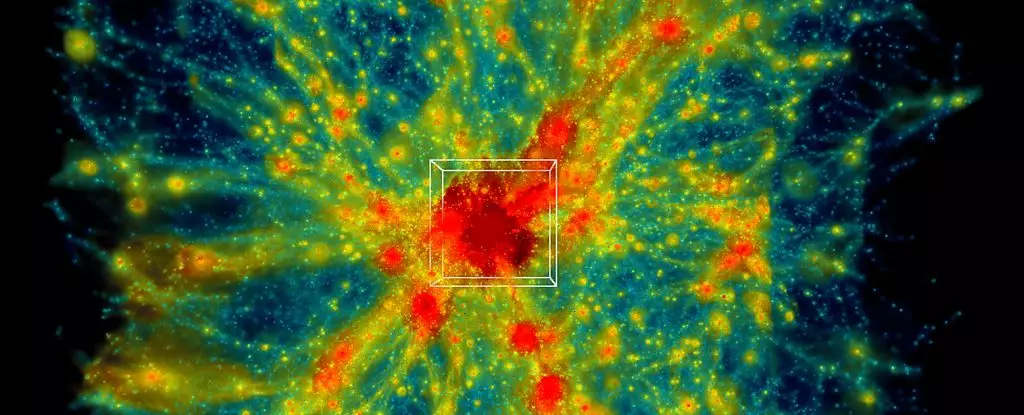Astrophysics stands on the frontier of human understanding, delving into the cosmic tapestry of the Universe. Recently, a significant milestone was reached at Oak Ridge National Laboratory (ORNL) in the United States, where scientists conducted the largest astrophysical simulation to date. This report outlines the motivations behind the ExaSky project, its groundbreaking achievements, and the implications for our understanding of dark matter and cosmic evolution.
In November 2024, researchers at ORNL utilized 9,000 nodes from the Frontier supercomputer to execute a simulation spanning over 31 billion cubic megaparsecs of the expanding Universe. This monumental task involved the utilization of what is termed cosmological hydrodynamics simulations, a sophisticated method that models interactions between dark matter and conventional matter. Leading the project, physicist Salman Habib of Argonne National Laboratory emphasized that for comprehensive cosmic understanding, both the push of gravitational interactions, dominated by dark matter, and the pull of atomic matter must be accounted for.
The complexities of these interactions render the Universe a colossal “kitchen sink” of physics, comprising everything from the behavior of hot gases to the lifecycle of stars and black holes. Such multifaceted phenomena challenge our grasp of cosmic processes, making sophisticated simulations essential tools for exploration.
As we observe the cosmos through the lens of vast distances and ancient light, we are essentially traversing a river of time. The long-term changes occurring on molecular and galactic scales are imperceptible without help, prompting scientists to rely on simulations to recreate the evolutionary story of the Universe.
Using the power of computational speed, physicists can manipulate time within these simulations—accelerating, rewinding, and zooming into periods of cosmic history that span billions of years. However, this is a daunting task; the intricacies of galactic phenomena and the sheer scale of cosmic distances complicate such simulations, often requiring simplifications that omit critical variables.
Previously, simulations operated within gravity-only paradigms, incapacitating their ability to fully represent the complexities involved in our Universe. Habib pointed out that until recently, it was nearly inconceivable to simulate significant cosmic volumes without relegating numerous physical details to the periphery.
The pivotal advancements leading to the ExaSky simulation stem from years dedicated to refining algorithms and optimizing the Hardware/Hybrid Accelerated Cosmology Code. The monumental enhancement of the Frontier supercomputer, propelled to the title of the fastest supercomputer in the world at that time, unlocked unprecedented computational capacity. This surge in processing power enabled researchers to expand their cosmic simulation significantly, culminating in a model capable of yielding critical insights into the Universe’s expansion.
Although the simulated volume constitutes a mere 0.001 percent of the Universe, the implications of the data derived from ExaSky extend beyond anecdotal findings. The scale sets the stage for direct correlations with contemporary astronomical surveys, such as those conducted by the Rubin Observatory in Chile. These comparisons are crucial, as they allow for a rigorous analysis of the Universe’s expansion relative to observable data.
The ExaSky project poses the promise of elucidating profound cosmic principles and enhancing our understanding of dark matter, a fundamental yet elusive component of the Universe. The methodological sophistication afforded by state-of-the-art computational resources propels astrophysical research into new realms, potentially offering groundbreaking discoveries about the fundamental forces and materials that govern our cosmos.
As data from ExaSky continues to unfold, the scientific community eagerly anticipates revealing findings that could redefine current knowledge bases and further deepen our understanding of the Universe. The future of astrophysical exploration lies in these ambitious computational endeavors, and the ExaSky simulation represents a compelling leap toward deciphering the cosmos’s most profound mysteries.


Leave a Reply